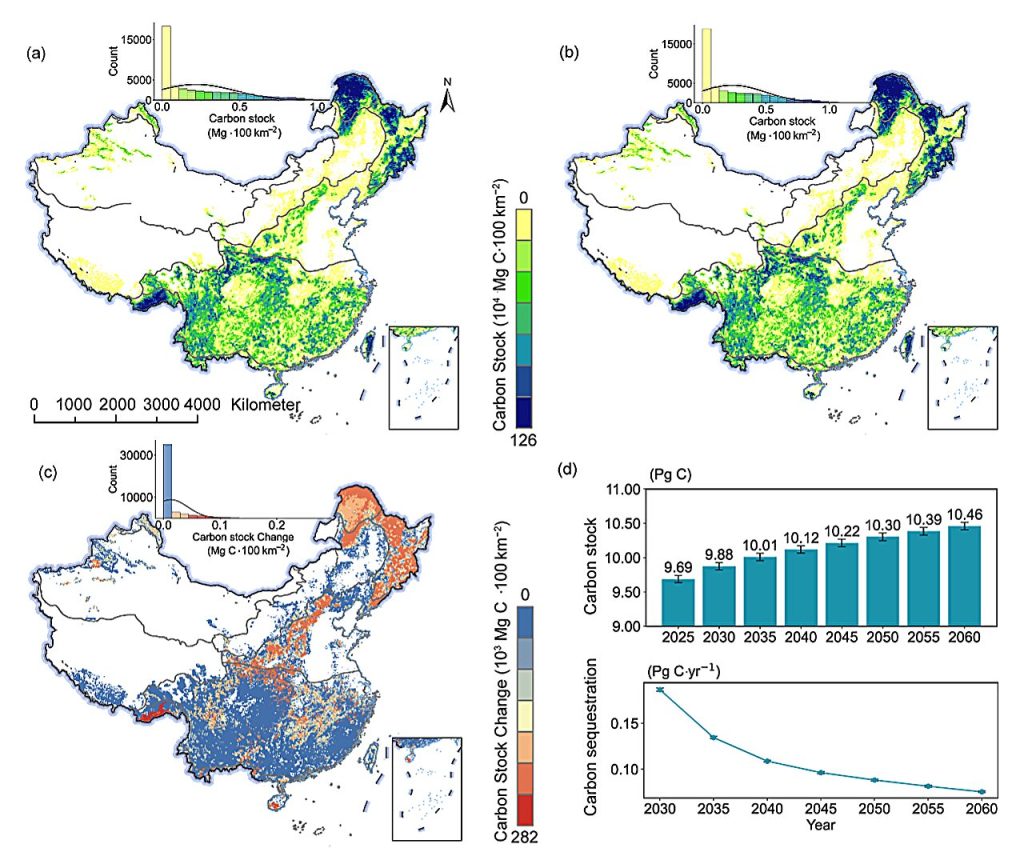
China’s natural forests play a crucial role in absorbing carbon dioxide and fighting climate change. But how much more carbon can they store? A new study in Forest Ecosystems provides a detailed estimate, revealing that while China’s natural forests will continue to capture carbon, their ability to do so is slowing down.
To estimate future carbon sequestration, the research team combined multi-source satellite data with on-the-ground forest surveys. Using biomass and forest age data, they developed models to predict how much aboveground carbon China’s natural forests could store under optimal conditions.
Unlike previous studies that relied on broad-scale estimations, this study mapped carbon storage at a 0.1° resolution, revealing significant regional differences. The warm temperate deciduous broadleaf forest zone, which contains mostly young forests, is expected to see the largest increase in carbon storage—rising by 26.36% by 2060. In contrast, the Qinghai-Tibet Plateau Alpine forests, which are largely mature, will show only a 0.74% increase.
“We found that forests at different growth stages have very different carbon storage potential,” said Prof. Qinghua Guo, the corresponding author. “Younger forests still have room to grow, while older ones are reaching their limit.”
China has invested heavily in natural forest protection and reforestation, but this study suggests that simply increasing forest area isn’t enough. With sequestration slowing, the key will be protecting old-growth forests while also ensuring younger forests thrive. Climate change, wildfires, and droughts could further affect forest carbon storage, making long-term monitoring essential.
More information:
Yixuan Zhang et al, Spatio-temporal dynamics of future aboveground carbon stocks in natural forests of China, Forest Ecosystems (2025). DOI: 10.1016/j.fecs.2025.100293
Provided by
Tsinghua University Press
Citation:
China’s forests are absorbing carbon—but for how long? (2025, February 28)
retrieved 28 February 2025
from https://phys.org/news/2025-02-china-forests-absorbing-carbon.html
This document is subject to copyright. Apart from any fair dealing for the purpose of private study or research, no
part may be reproduced without the written permission. The content is provided for information purposes only.








